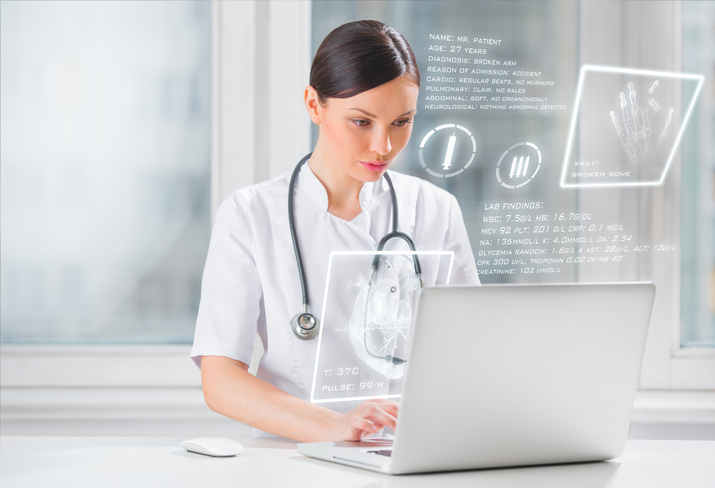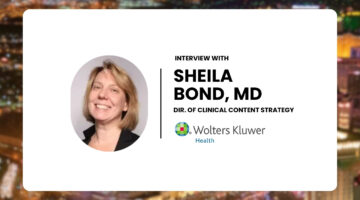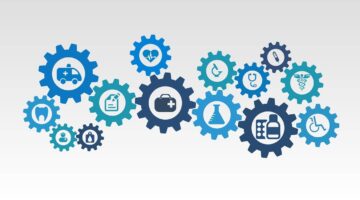
Remote patient monitoring (RPM) is not new. In fact, products like HomMed (now owned by HoneyWell) and Cardiocom (now owned by Medtronic) are over a decade old. While Covid-19 has created new buzz around virtual care, many health systems have been doing some form of remote health monitoring for many years.
However, in recent years, RPM has fundamentally evolved, enabling more sophisticated clinical monitoring. Legacy vendors known for their medical devices now struggle to horizontally integrate software, hardware, and user experience together into a single platform while newer companies have taken advantage of advances in IoT, artificial intelligence, and cloud computing to expand the possible clinical use cases for RPM. Moreover, changes to Medicare reimbursement and the introduction of value-based payment models, such as the Quality Payment Program (QPP) and the Hospital Readmissions Reduction Program (HRRP), have created greater financial incentives for RPM. And of course, COVID-19 has further reduced financial barriers to adoption and proven the value and demand for managing care within the home.

Transforming Clinical Content with Ambient & Generative AI
Sheila Bond, MD, talked about the latest trends regarding integration of AI in healthcare.
In the same way the internet went through a seismic shift in the early 2000’s as it went from Web 1.0 to 2.0, RPM is experiencing a similar evolution that is poised to transform care delivery as we know it.
So, what does this next generation of RPM – RPM 2.0 – look like?
Home-based care for chronic disease
Many of the resource issues in the US and UK can be attributed to our management—or lack of management—of chronic disease. According to the CDC, 90% of the $3.5 trillion dollars spent on healthcare annually is spent on those with chronic health conditions. Today, with healthcare being primarily delivered within the four walls of the hospital, our system is structured to deal with acute needs far better than long-term management of disease.
For chronically ill patients, the next generation of RPM can allow healthcare to be extended into the home and, for the first time, allow safe preventive and proactive management of higher-risk patients, while also dramatically reducing healthcare costs. RPM 2.0 can be used to help post-acute transitions of care for high-risk patients to accelerate discharge home, improve recovery and reduce readmissions. Today, between 15-25% of people discharged from a hospital will be readmitted within 30 days, largely because patients are not able to identify signs of deterioration until it’s too late. With RPM 2.0, providers can offer continued surveillance post-discharge that allows them to intervene or adjust a care plan based on real-time, continuous patient vitals from home. By offering hospital-grade monitoring at home, RPM can also eliminate the need for high-risk patients to be admitted into a hospital in the first place. With 24/7 insight into patient vitals and the ability to identify early signs of deterioration, hospitals can provide acute hospital care within the home, freeing up hospital capacity and enabling a better care experience for patients.
Data-first remote monitoring
One of the greatest challenges to delivering remote care to higher-risk, higher-acuity patients, such as those with COPD, cancer, or diabetes, is obtaining high-quality, clinical-grade data. For these patients, health deterioration can happen quickly and with significant consequences. While intermittent monitoring may be appropriate for lower-risk populations, safely managing sick and higher-risk patients at home requires more than a daily blood pressure reading.
The winners in RPM will be those who do not see themselves as device companies, but rather, as data companies. Monitoring devices are simply a means to capture a patient’s health data. It is making sense of that data that truly adds value to providers so that they can understand patient health at home. Gaining insight that can meaningfully impact care decisions requires deeper tracking of human health at home, particularly with continuous data.
Actionable insights
One of the reasons that intermittent blood pressure and weight measurements have been the mainstay of RPM for decades is because they are easy to operationalize and clinically manage. For many within healthcare, the thought of continuous health data may seem excessive, especially since legacy products set an expectation that every data point requires clinical attention to review.
But data should be seen as simply a raw input rather than the final product. Providers should not have to review individual data points, but instead, they should be given actionable insights. The next generation of RPM platforms should serve as a call to action when a patient’s health is deteriorating, or better yet, if there is a probability of deterioration in future that warrants proactive treatment.
While capturing a deep picture of patient health is critical to managing chronically ill patients, it’s the sophisticated monitoring capabilities that allow providers to do this at scale. By looking beyond a single data point to sustained trends across multiple vital signs, clinical monitoring is what separates the signal from the noise and can allow more efficient use of providers’ time, ultimately improving patient outcomes and cost of care.
Integrated intervention
Ultimately, the ability of RPM to improve healthcare delivery is contingent on the intervention. It is not enough to identify health deterioration if there is not a quick or easy way to intervene. While this aspect of RPM receives the least focus, it is the most important. An intervention doesn’t need to be complicated. In fact, it can be as simple as scheduling a same day telehealth visit. However, even when it does become more complicated, involving additional services such as pharmacy delivery or in-home emergency care, better outcomes require integrated and coordinated services to allow for rapid intervention.
With its ability to extend care into the home for all patients, including high-risk and high-acuity patients, and provide a data-first approach to healthcare, this next generation of RPM holds the key to reshaping the health care system into one that will work better for patients and providers alike. As health systems continue to search for ways to improve their care delivery model, RPM will continue to evolve to meaningfully shift care outside the hospital and move healthcare from a reactive to a proactive model.
Photo: HASLOO, Getty Images
Christopher McCann started Current Health in 2015 as a medical student, ultimately leaving at the end of his third year with the belief that technology could have a more profound impact on how care is delivered at scale. Since then, Chris has led the company through many major milestones, including the platform’s FDA clearance in 2019, 3,000% revenue growth in 2020, and growing the team to 150 employees across the U.S. and U.K. in 2021.
Under his leadership, the company raised over $70M in capital before being acquired by Best Buy Health in October 2021. Today, Chris sits on the Best Buy Health leadership team helping to develop its virtual care strategy while also leading operations for the Current Health business.
This post appears through the MedCity Influencers program. Anyone can publish their perspective on business and innovation in healthcare on MedCity News through MedCity Influencers. Click here to find out how.








